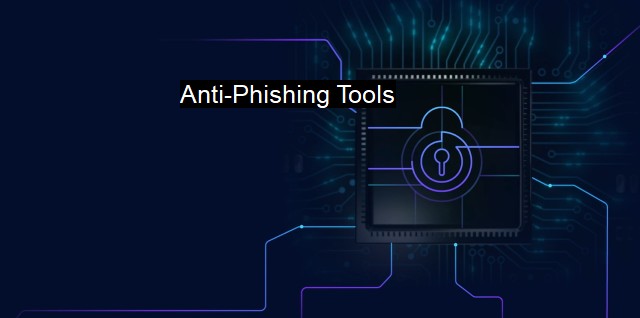What are Anti-Phishing Tools?
Mitigating the Prevalent Threat of Phishing: The Vital Role of Anti-Phishing Tools in Countering Social Engineering Attacks
Cybersecurity and antivirus applications are becoming increasingly complex as phishing attacks become more sophisticated. The digital landscape has paved the way for a wide range of indispensable applications, including anti-phishing tools designed to protect users and businesses from phishing threats.Exact definitions can vary, but broadly speaking, anti-phishing tools refer to a collection of software or techniques employed to detect and mitigate phishing attacks. Phishing is a term broadly applied to a range of cyber-attacks aimed at tricking a user into providing valuable personal information (such as passwords, payment details, or other sensitive data), which the attacker can then exploit for nefarious purposes. As much as the motivation behind phishing attacks often varies, the common thread between them always involves an attacker misrepresenting themselves to extract important details.
These threatening potential outcomes catalyzed the development of powerful cybersecurity tools designed to counteract such dangers. When speaking of anti-phishing tools, different types come to mind. They can range from software solutions mounted within web browsers, standing as hedges that prevent user access to harmful sites, to advanced software designed to identify suspicious emails or email scam.
Most anti-phishing tools employ multiple strategies to provide comprehensive user protection. One common method involves maintaining comprehensive databases of known phishing sites and regularly cross-referencing these with new data. As malware typically changes over time, this maintenance step can help make sure users are continually protected against the very latest threats.
Another great strategy encompasses email filtering. Spammers often send massive quantities of phishing emails in the hope that even a small percentage will get a response. With anti-phishing tool plugins installed, email platforms can automatically check email messages against established databases, filter them, and accord notifications of phishing.
Advanced analysis software is at play within these tools, able to identify uncommon patterns and flagging them as potentially dangerous. They use machine learning algorithms or artificial intelligence to compile an extensive understanding of typical user behavior patterns over time. When an action deviates significantly from these normal patterns, the software activates alerts highlighting suspicious activities.
The tools may incorporate heuristic analysis techniques —general rules outlining that specific forms of behavior could prove unsafe— to prevent insightful tactics adopted by cyber fraudsters. With heuristic analysis, suspicious activity (uncharacteristic system, domain changes, visits to locked sites) can generate automated responses ranging from users warnings to blocking the deceptive pages outright.
Link validation tools also come with anti-phishing software. Often, phishing emails contain hyperlinks leading users to harmful websites designed to solicit sensitive information once innocent users access them. with link analysis features, the software highlights the entire path a given link will lead a user, which could technically be different from its apparent path.
Modern phishing attempts, always being pitted against constantly evolving and advancing anti-phishing applications, must become more creative and intricate to remain effective. These include targeted attacks, known as "spear-phishing," that prey on specific individuals, industries, businesses, or corporations. To address these complicated and highly personalized security threats, businesses have developed advanced anti-phishing tools. These use a combination of threat intelligence services, automated systems, and expert professional consultation to ward off phishing attempts.
All things considered, it’s crucial that both individuals and organizations adopt suitable anti-phishing tools as part of larger approaches to cybersecurity. The tools, as part of the broader scope of cybersecurity, provide essential security features — shoring up defenses against personal hacking, data breaching, identity theft, or financially-motivated fraud. As phishing attacks continue gaining sophistication, it's advisable to stay imminent with the ever-evolving technologies designed to thwart them.

Anti-Phishing Tools FAQs
What are anti-phishing tools?
Anti-phishing tools are software or programs designed to protect users from phishing attacks. These tools detect and prevent fake websites and emails that trick users into sharing sensitive information like passwords, credit card numbers, or other personal details.How do anti-phishing tools work?
Anti-phishing tools use various techniques such as machine learning, AI, and blacklists to identify and block phishing attempts. They analyze the email or webpage content and compare it against known phishing patterns or signatures. If a match is found, the tool can alert the user, block the webpage, or delete the email before it reaches the user's inbox.Can anti-phishing tools detect all phishing attacks?
No, anti-phishing tools cannot detect all phishing attacks since hackers are always coming up with new ways to trick users into revealing their personal information. However, using these tools can significantly reduce the risk of falling for phishing attempts.Do I need to pay for anti-phishing tools?
There are both free and paid anti-phishing tools available. The free ones may offer basic protection, while the paid ones may have advanced features like real-time scanning, automatic updates, and tech support. It depends on your needs and budget whether you choose a free or paid anti-phishing tool.| | A | | | B | | | C | | | D | | | E | | | F | | | G | | | H | | | I | | | J | | | K | | | L | | | M | |
| | N | | | O | | | P | | | Q | | | R | | | S | | | T | | | U | | | V | | | W | | | X | | | Y | | | Z | |
| | 1 | | | 2 | | | 3 | | | 4 | | | 7 | | | 8 | | |||||||